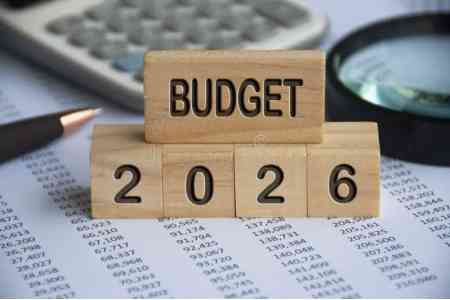


ArmInfo.In the draft 2026 budget, the Central Bank's fiscal policy aims to strengthen the resilience of the Armenian economy and increase GDP potential through enhanced competitiveness in Armenia, a significant expansion of investment in economic security infrastructure, and human capital, as stated by Central Bank Chairman Martin Galstyan on October 27 during the presentation of the draft 2026 state budget to the National Assembly committees.
He noted that the short-term factors influencing high economic growth that occurred last year are gradually neutralizing. Under these conditions, according to the head of the Central Bank, potential sustainable economic growth will depend on the results of government policies aimed at increasing productivity, stimulating exports, and improving the investment environment. Given the focus on fiscal consolidation, Galstyan highlighted the r importance of capital expenditures and improving their efficiency.
According to him, in 2026, fiscal policy will be guided by the target of 5.4% economic growth, focusing on fiscal consolidation and debt sustainability.
Galstyan noted that in the context of geopolitical and economic uncertainty, significant internal and external risks exist. Therefore, the draft budget takes these into account, including scenario analyses, their assessment in the case of budget flows, and possible areas for fiscal policy adjustment. "This is an important prerequisite in terms of fiscal risk management," he added. Additionally, importance is placed on strict restrictions on the use of the reserve fund to address additional financial needs arising from macroeconomic risks. The Central Bank Governor noted that, according to estimates, the tax-to-GDP ratio is expected to increase by 0.4 percentage points in 2026, reaching 24.9%. "However, this reflects a certain optimism, exceeding the indicators envisaged in the medium-term expenditure program for 2026-2028," he said.
The Central Bank Governor also noted that state budget revenues in 2026 will have a slight dampening effect on gross demand. "Therefore, fiscal consolidation, an increase in the tax-to-GDP ratio, and spending cuts will lead to a reduction in the budget deficit to GDP by 1 percentage point in 2026, reaching 4.5% of GDP," Galstyan noted He added that the government debt to GDP ratio will increase by 2.8 percentage points next year, reaching 53.5%. "In the context of this growth and macroeconomic risks, the government should prioritize more efficient use of resources and developing risk management skills, creating long-term guarantees to ensure fiscal stability," the head of the Central Bank emphasized.
A reduction in the budget deficit and fiscal consolidation will also reduce the growth rate of the government's debt to GDP, bringing the figure to 54.2% in 2028. Meanwhile, in 2026, the authorities will continue to attract funds from external sources to finance the budget deficit and capital expenditures.
In conclusion, he noted that tax reforms aimed at increasing the efficiency of tax collection will create the preconditions for long-term flexibility in fiscal policy. In the context of geopolitical uncertainties, Galstyan emphasized that constant risk monitoring and the development of approaches and skills for risk management are of great importance. These factors can be key to macroeconomic stability in the medium and short term, as well as maintaining debt stability in the long term.